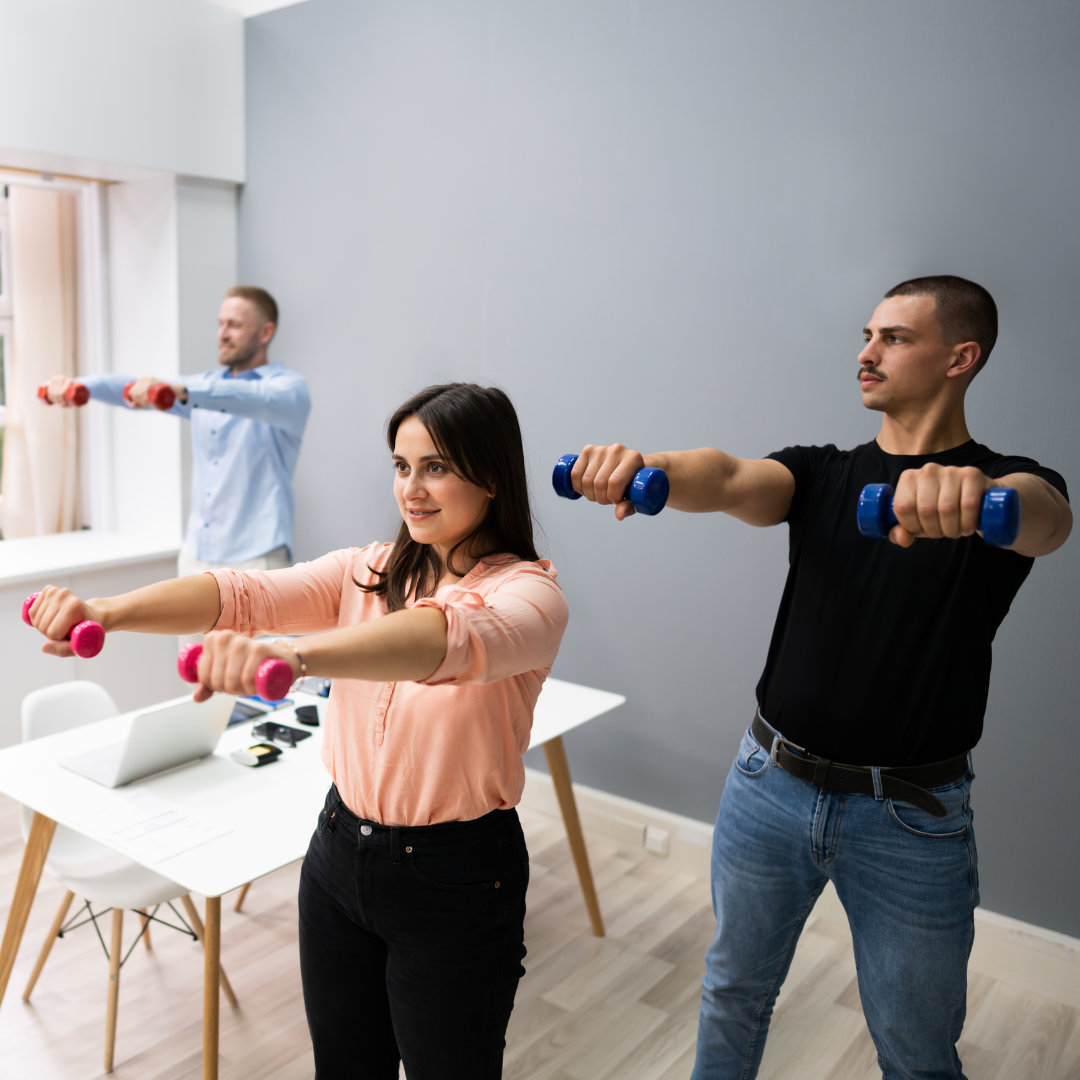Workplace Ergonomics: Perils of Bad Posture for Employees
In today's fast-paced and technologically driven world, the majority of employees spend a significant amount of time at their private desks, often adopting poor postures without realizing the potential risks they pose to their health. Workplace ergonomics is a critical consideration for employers and employees alike, as it directly impacts productivity, employee well-being, and the overall success of an organization.
In this article, we will explore the perils of bad posture in the workplace and how it affects employees, while also providing valuable insights into creating a more ergonomic workspace to promote better posture, comfort, and efficiency.
The Impact of Bad Posture on Employees
- Musculoskeletal Disorders: The most immediate consequence of bad posture is the development of musculoskeletal disorders. Prolonged periods of sitting with bad posture can lead to neck, shoulder, and back pain, as well as discomfort in the wrists and hands. These conditions, if left unaddressed, can progress into chronic issues that affect an employee's ability to work efficiently and lead to prolonged sick leaves.
- Reduced Productivity: When employees experience discomfort or pain due to bad posture, their focus and productivity suffer. Discomfort can lead to distraction, decreased attention to detail, and an overall reduction in work quality. A workforce suffering from bad posture related issues is likely to underperform, costing the organization both time and money.
- Fatigue and Mental Health: bad posture can also impact an individual's mental health and energy levels. Constant discomfort can cause fatigue, leading to reduced motivation and increased stress levels. Over time, these factors can contribute to employee burnout and even mental health issues, such as anxiety and depression.
- Reduced Job Satisfaction and Increased Turnover: Employees who experience discomfort and pain due to bad posture are more likely to feel dissatisfied with their jobs and the work environment. This dissatisfaction can result in increased turnover rates, which are expensive and disruptive to an organization's functioning.
Bad posture causes discomfort and pain, which will eventually affect one's productivity.

Creating an Ergonomic Workspace: Promoting Health and Productivity
Investing in an ergonomic workspace is crucial for the health and well-being of employees. Here are additional tips to enhance the ergonomics of your workplace:
1. Proper Lighting: Ensure that the workspace is well-lit to reduce eye strain and fix bad posture. Use natural light where possible and provide task lighting for focused activities.
2. Foot Support: Encourage the use of footrests for employees who may need extra support to maintain a comfortable sitting and fix bad posture.
3. Organized Workstations: Keep workstations tidy and organized to minimize reaching and bad posture for necessary items.
4. Adjustable Monitor Arms: Consider using adjustable monitor arms that allow employees to position their screens at the ideal height and angle for their comfort and fix bad posture.
5. Ergonomic Accessories: Provide ergonomic accessories such as document holders, laptop stands, and anti-fatigue mats to further support employee comfort and fix bad posture.
6. Sit-Stand Solutions: Offer sit-stand desks or height-adjustable workstations to enable employees to alternate between sitting and standing throughout the day.
7. Supportive Seating: Invest in seating with breathable materials and proper cushioning to enhance comfort during extended periods of sitting.
8. Stretching Programs: Implement regular stretching programs or yoga sessions to promote flexibility and fix bad posture.
9. Ergonomic Assessments: Conduct ergonomic assessments for each employee to identify individual needs and make appropriate adjustments.
10. Encourage Movement: Foster a culture that encourages employees to move regularly, whether through walking meetings or active breaks.
11. Monitor Break Times: Ensure employees are taking their breaks and encourage them to step away from their desks during lunch.
12. Provide Ergonomic Resources: Offer resources such as online tutorials or printed materials on proper ergonomics to reinforce good habits.
13. Review and Adapt: Regularly review the effectiveness of your ergonomic initiatives and be open to feedback from employees to make necessary adjustments.
14. Ergonomic Wellness Program: Consider implementing an ergonomic wellness program that rewards employees to fix bad posture and ergonomic habits.
A little stretching or walking around the office are some good ways to prevent bad posture.

Promoting Ergonomics Beyond the Office Desk-Improving Posture in Office
While office desk setups are critical, employers should not overlook the importance of promoting good posture and ergonomics in other areas of the coworking space as well.
- Break Rooms and Lounges: Ensure that break rooms and lounges are equipped with comfortable seating options that encourage employees to relax and take a break from their desks. This can help prevent prolonged sitting and allow for bad posture change throughout the workday.
- Standing Meetings: Consider implementing standing meetings for shorter discussions. Standing meetings not only save time but also encourage better circulation and engagement among employees.
- Ergonomic Workstation Assessments: Conduct regular ergonomic workstation assessments for employees to identify and address potential bad posture related issues. Personalized assessments can help identify individual needs and provide tailored solutions.
- Wellness Programs: Incorporate wellness programs that focus on stretching exercises, yoga, or other physical activities that promote better posture and overall well-being. Such programs can be a fun way to encourage employees to prioritize their health.
Participating in your company's wellness program can help you avoid the risk of having a bad posture.

Finding Your Flexible Space at Office Hub
When it comes to creating an ergonomic workspace, finding the right office space is crucial. Office Hub offers a convenient platform that connects businesses with flexible and well-designed workspaces to promote productivity and employee well-being.
Step 1: Let's get your workspace set up, photographed, priced, and ready for the world to see.
Office Hub's team of experts will work with you to ensure that your office space is showcased at its best. Professional photographs and detailed information about your space will be captured to attract potential tenants.
Step 2: We advertise your space on our website and all the top commercial property portals.
Office Hub will list your space on their website and other leading commercial property portals to maximize exposure and reach the right audience. Their extensive network ensures that your office space gets the attention it deserves.
Step 3: We qualify every lead, book tours, and send you regular feedback about how it’s all going.
Office Hub takes care of the entire process, from handling inquiries to scheduling property tours. They ensure that every lead is qualified, providing you with valuable feedback throughout the process.
Step 4: We negotiate a great deal on terms that work for both you and the tenant.
Negotiating lease terms can be a complex process, but with Office Hub's assistance, you can rest assured that they will work diligently to secure the best deal for both you and the tenant, ensuring a win-win situation for all parties involved.
Workplace ergonomics is more than just a buzzword; it is a critical aspect of employee health, productivity, and job satisfaction. The perils of bad posture can have a significant impact on an employee's physical and mental well-being, ultimately affecting an organization's success. By implementing ergonomic principles and providing employees with the tools they need to maintain better posture, companies can create a healthier and more productive work environment.
When seeking the perfect office space to foster productivity and well-being, Office Hub is your ideal partner, connecting you with flexible, ergonomic workspaces all over Australia to meet your business needs. Embrace ergonomic practices and create a workplace that not only supports your team but also sets the stage for success in the long run. Contact us now!


